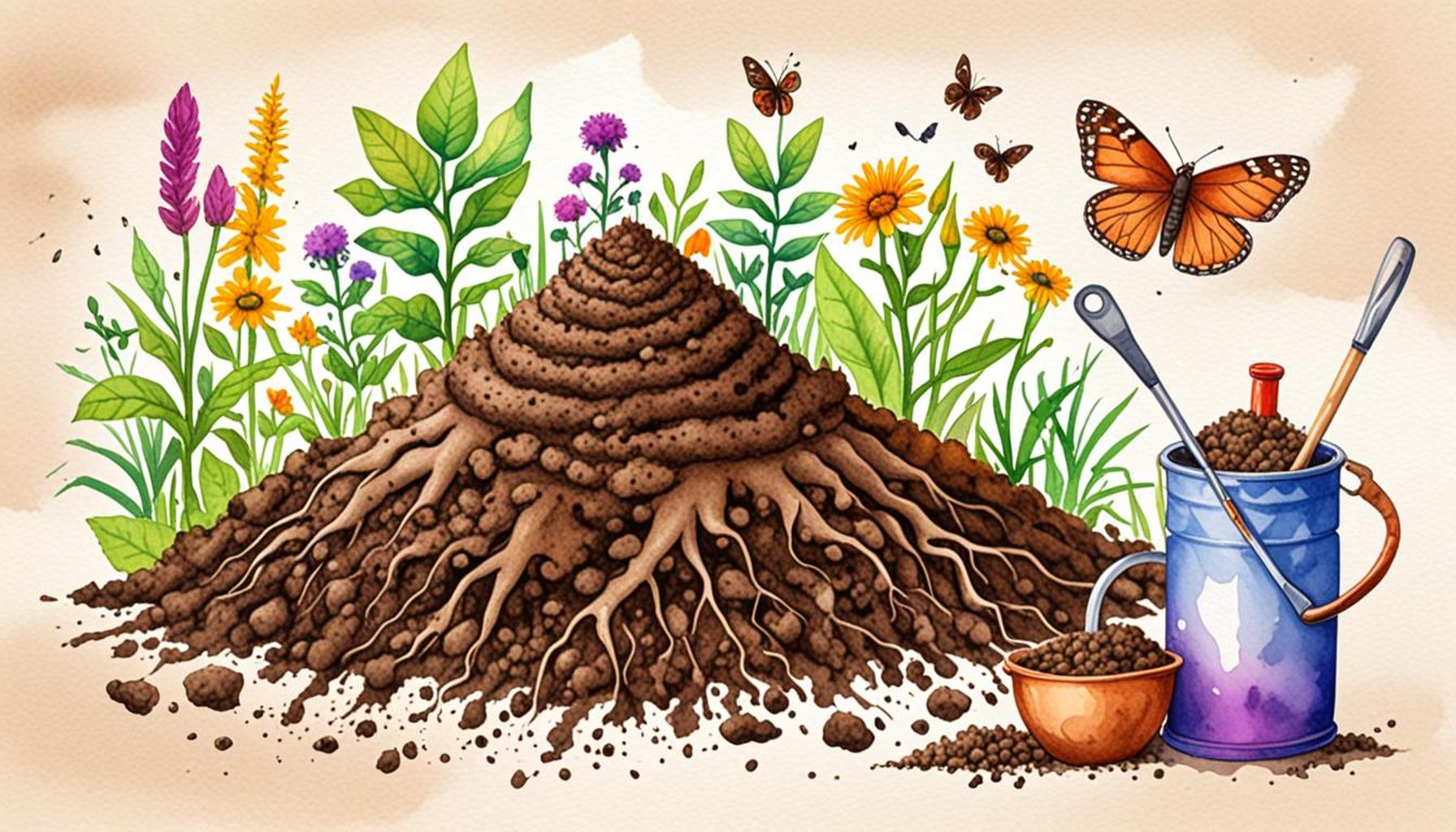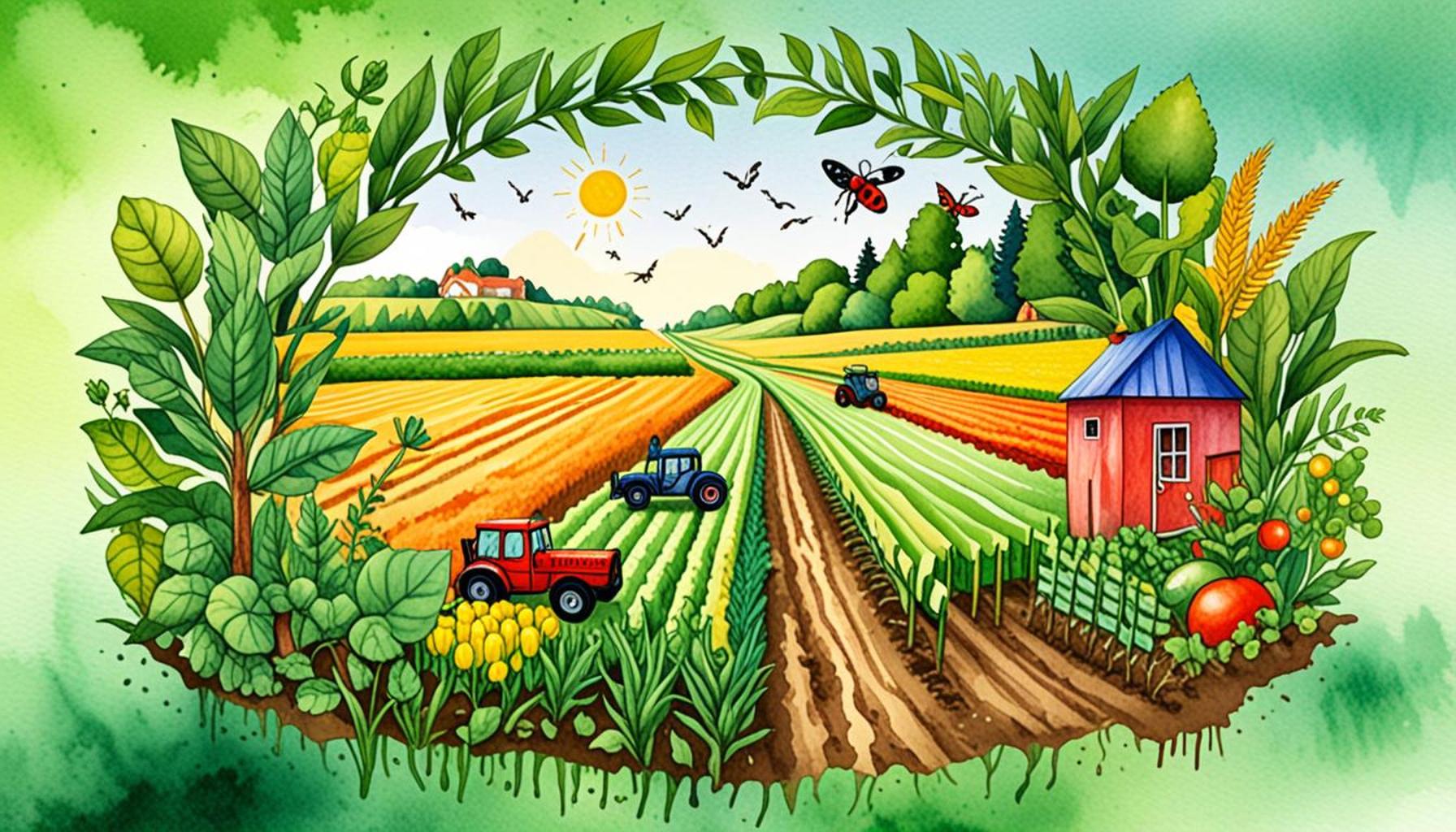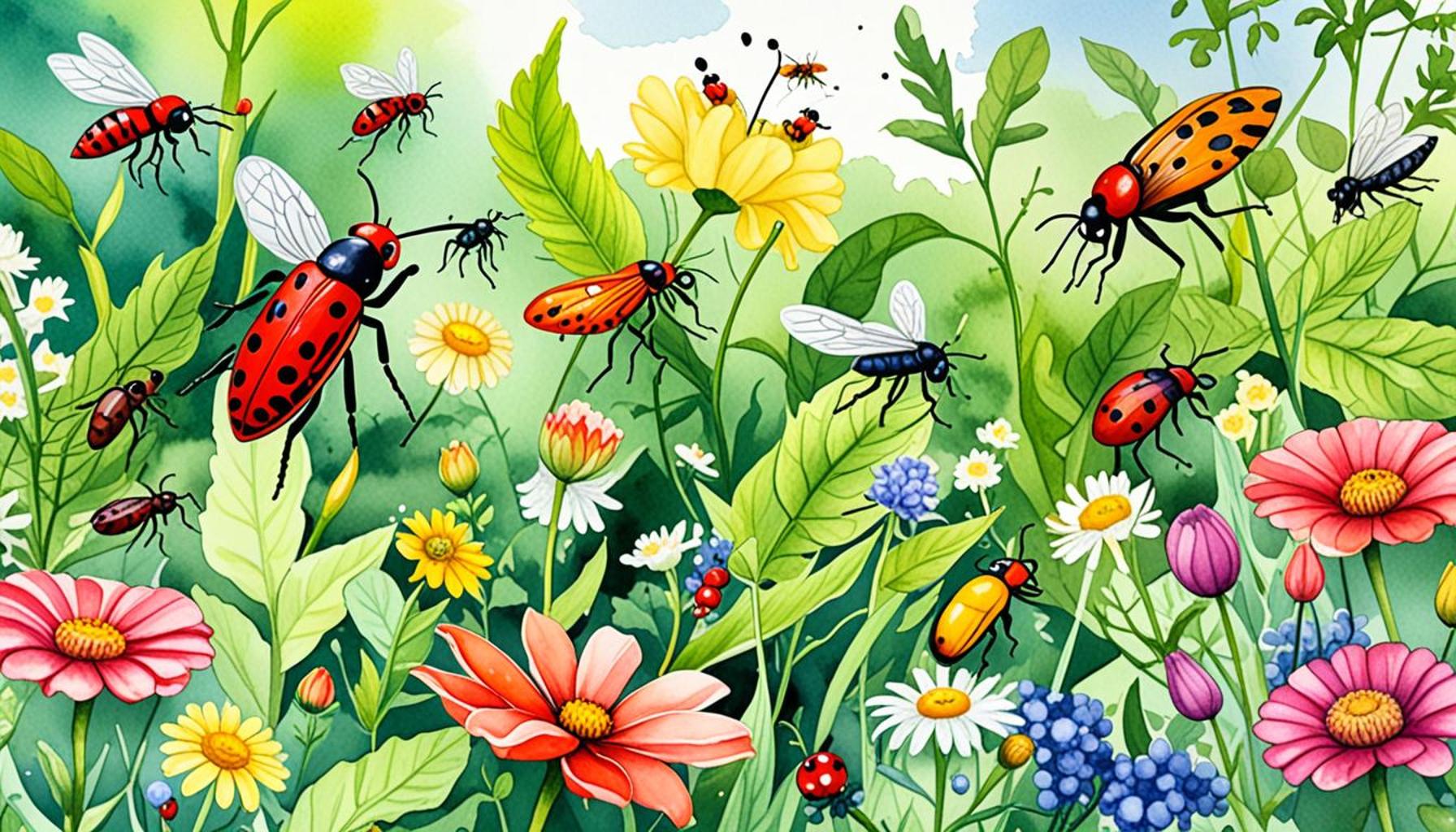The Importance of Soil Health in Pest Management Strategies

The Intricate Balance of Soil and Pest Dynamics
In the realm of agriculture, the adage “healthy soil equals healthy plants” rings particularly true, emphasizing the critical role that soil health plays in effective pest management. When soil is properly nourished and maintained, it fosters an ecosystem that not only supports vibrant plant growth but also inherently curtails pest populations. This multifaceted relationship can lead to a substantial reduction in pest-related crop damage.
To fully grasp the impact of soil health on pest management, it’s essential to consider several pivotal factors:
- Microbial Activity: The soil is teeming with diverse microorganisms, including bacteria, fungi, and protozoa, which are vital for maintaining ecological balance. These organisms contribute to pest suppression through various mechanisms, such as outcompeting pests for resources, producing substances that repel harmful insects, and enhancing plant defense mechanisms. For example, beneficial nematodes feed on soil-borne pests, providing a natural form of pest control.
- Nutrient Availability: A well-balanced supply of nutrients—such as nitrogen, phosphorus, and potassium—enables plants to develop strong root systems, healthy foliage, and resistant structures. Healthy plants are naturally more resilient to pest pressures, as they can allocate energy to defensive compounds that deter insects. Research indicates that crops grown in nutrient-rich environments demonstrate greater resistance to aphid infestations, a common pest in many agricultural sectors.
- Soil Structure: The architecture of the soil plays a critical role in the overall health of crops. Soil that is loose and well-aerated allows for better water retention and root expansion, which in turn reduces water stress and helps plants to thrive. A compromised soil structure can lead to poor drainage, resulting in plants that are weakened and more susceptible to pest infestations.
As the agricultural community increasingly focuses on sustainable practices, the importance of soil health in pest management is becoming more prominent. Research indicates that organic farming methods, which often prioritize soil health through practices like crop rotation and cover cropping, lead to more robust soil structures. This, in turn, correlates with significantly lower pest incidences across numerous crop types. For example, organic systems may yield tomatoes with fewer pest-related blemishes, illustrating the effectiveness of holistic pest management strategies.
By actively improving soil health, farmers can adopt a more comprehensive approach to managing pests, ultimately reducing dependence on chemical pesticides. As conversations around the environmental impacts of pesticide use intensify, emerging strategies that advocate for soil health present a viable path forward for the future of agriculture in the United States. Embracing these practices not only aligns with ecological sustainability but also paves the way for innovative pest control solutions that can benefit farmers and consumers alike.
DISCOVER MORE: Click here to learn about the impact of harvesting on plant health
Understanding Soil Health: The Foundation for Sustainable Pest Control
Soil health is a cornerstone of sustainable agriculture and plays a crucial role in efficient pest management strategies. While farmers have long depended on chemical pesticides to control pest populations, an emerging body of research illustrates the pivotal influence that healthy soil can exert on pest dynamics. By nurturing soil, farmers can create a more resilient agricultural ecosystem that allows crops to thrive while naturally mitigating pest pressures.
A key to understanding the relationship between soil health and pest resistance lies in the diverse biological community found within the soil. This microscopic army includes not only beneficial bacteria and fungi but also larger organisms such as earthworms and beneficial insects. Each contributes to soil vitality and plant health in distinct ways:
- Biological Control Agents: Beneficial microorganisms can outcompete or prey upon harmful pests. For example, mycorrhizal fungi enhance nutrient uptake for plants, which in turn allows them to produce beneficial compounds that deter pests.
- Soil Nutritional Profile: A rich, diverse soil ecosystem ensures optimal nutrient availability for plants. With access to essential minerals, plants can develop stronger cell walls and produce secondary metabolites that serve as natural insect repellents.
- Soil pH and Moisture Levels: Healthy soil maintains an appropriate pH and moisture level, which is critical for nutrient absorption. Crops grown in balanced conditions are better equipped to fight off common pests, reducing dependency on chemical interventions.
Recent studies have highlighted the efficacy of practices such as crop rotation and cover cropping in fostering soil health. These methods lead to improved biodiversity within the soil, which promotes an environment conducive to beneficial species that naturally control pest populations. For instance, rotating crops that belong to different plant families can break the life cycles of pests that target specific plants, significantly reducing their abundance in the following crop cycles.
The ability to manage pest populations through soil health not only enhances crop resilience but also offers economic benefits to farmers. By fostering a healthy soil ecosystem, agricultural producers can decrease their reliance on synthetic pesticides, which can lead to reduced costs for farmers over time. Moreover, as consumers become more environmentally conscious, the demand for sustainably grown produce continues to rise, providing a financial incentive for farmers to prioritize soil health.
As the discourse surrounding sustainable agriculture advances, it becomes increasingly clear that soil health is not just an agricultural best practice; it is a vital strategy for effective pest management. The transition from conventional to holistic farming practices can empower farmers to embrace ecological principles that serve both their crops and the environment. With this understanding, the agricultural community can cultivate healthier soils, leading to healthier plants, and in turn, a more sustainable future for farming in the United States.
| Soil Biodiversity | Pest Control Mechanisms |
|---|---|
| Enhanced Microbial Activity | Natural antagonists suppress harmful pests. |
| Nutrient Cycling | Improved soil nutrients lead to healthier crops. |
Maintaining healthy soil is critical for effective pest management. Healthy soils, rich in microbial diversity, play a crucial role in controlling pest populations. Beneficial microorganisms are not just essential for nutrient availability; they also act as natural pest antagonists, helping to keep harmful species at bay. For example, certain fungi and bacteria can inhibit the growth of nematodes or reduce the attractiveness of plants to pest insects.Another important aspect is the impact of nutrient cycling in soil health. When soil is well-managed, it supports stronger, healthier crops that can resist pest infestations more effectively. Plant stress from nutrient deficiency makes crops more vulnerable to pests. By ensuring nutrient availability through organic amendments and effective crop rotation, growers can enhance their plants’ natural defenses, ultimately leading to a decrease in pest damage. Understanding these connections provides vital insights for sustainable pest management practices, allowing farmers to balance productivity with ecological responsibility.
DISCOVER MORE: Click here to learn effective pest control strategies
Integrating Soil Health into Pest Management: Strategies for Farmers
To truly harness the power of soil health for pest management, farmers can implement a variety of integrated practices that work synergistically to enhance soil conditions and minimize pest outbreaks. One prominent approach is the use of integrated pest management (IPM) practices that focus not only on addressing current pest issues but also on creating a proactive environment that discourages future infestations.
Among these practices, the addition of organic matter — such as compost or well-rotted manure — can have transformative effects on soil health. Organic matter improves soil structure, enhances moisture retention capabilities, and fosters microbial activity. A study published in the Journal of Pest Science found that organic amendments increased the resilience of crops to pest pressure, leading to a remarkable 30% reduction in pest populations over multiple growing seasons. Enhancing soil organic matter not only provides plants with fortified defenses against pests but also boosts overall yield, benefiting farmers economically.
Moreover, employing cover cropping during off-seasons is another effective strategy for maintaining soil health while disrupting pest life cycles. For instance, planting cover crops such as clover or vetch can fix nitrogen in the soil, improving fertility while simultaneously acting as a habitat for beneficial nematodes and insects. Research has shown that specific cover crops can reduce populations of damaging pests by up to 50% by attracting natural predators that help control pest populations.
- Fostering Biodiversity: A diverse array of crops, along with cover crops, supports a multitude of organisms that contribute to pest regulation. Polyculture practices can be particularly effective, as mixing crops can limit pest access to their preferred food sources.
- Implementing Reduced Tillage: Minimizing soil disturbance promotes the preservation of beneficial soil microflora and fauna. It also helps in maintaining soil structure, which benefits root development and resilience to pest pressures.
- Monitoring Soil Health Indicators: Farmers can adopt regular soil testing to track nutrient levels, organic matter content, and microbial activity. By managing these indicators, they can make informed decisions that boost soil health and consequently reduce pest pressure.
Furthermore, collaboration within the agricultural community plays a pivotal role in promoting soil health for pest management. Knowledge-sharing initiatives, such as workshops, local farmer groups, and online platforms, can help disseminate effective practices. For example, farmers who engage in community-supported agriculture (CSA) programs often exchange ideas and techniques that bolster both soil health and pest resistance. This collective approach not only fosters a deeper understanding of the ecological interactions within agricultural systems but also enhances the community’s resilience against pests.
The significance of soil health extends beyond individual farming operations; it has far-reaching implications for environmental sustainability and food security as well. Maintaining healthy soil is pivotal in combating the challenges posed by climate change and fostering agricultural resilience in an ever-shifting ecosystem. As farmers increasingly recognize the link between soil health and effective pest management, they become equipped to cultivate crops in a manner that is both sustainable and economically viable.
LEARN MORE: Click here to enhance your gardening skills
Conclusion: A Holistic Approach to Pest Management
The integration of soil health into pest management strategies represents a revolutionary shift in agricultural practices, emphasizing the interdependence between soil vitality and pest control. By adopting sustainable methods such as integrated pest management (IPM), adding organic matter, implementing cover crops, and fostering biodiversity, farmers are not only enhancing pest resistance but also improving overall soil quality. This holistic approach underscores the importance of viewing pest management through the lens of soil health, recognizing it as a foundational element in the resilience and productivity of agricultural systems.
Research indicates that practices aimed at improving soil health can lead to substantial reductions in pest populations, thus showcasing the potential for robust crop yields while simultaneously minimizing reliance on synthetic pesticides. Moreover, these strategies can contribute significantly to environmental sustainability by enhancing nitrogen levels, stimulating beneficial microbial communities, and supporting the intricate ecological networks essential for a balanced agro-ecosystem. The collective effort of farmers, researchers, and local communities in sharing knowledge and practicing adaptive management will further catalyze this transformative shift in pest management strategies.
As we face ongoing challenges related to climate change, food scarcity, and ecological degradation, prioritizing soil health emerges as a pivotal solution. For farmers across the United States and beyond, recognizing soil as a living resource rather than a mere substrate not only cultivates a path to effective pest management but also draws us towards a more sustainable agricultural future. Embracing this new perspective can ultimately help secure food systems that are resilient, productive, and environmentally friendly.


